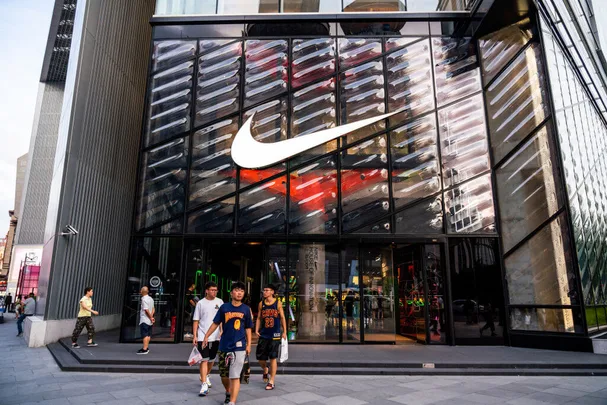Nike isn’t just a place to buy trainers and gym outfits, it’s become a brand known for pushing progressive campaigns. Nike has been praised for its ads that stand up for women, people of colour, and any other marginalised groups whose voices need to be heard.
However, Nike hasn’t always had the most ethical practices. Nike’s sweatshops were the talk of the town in the ‘90s, and they’ve made tremendous efforts to change that identity – which includes their support for lesser heard voices. However, recent reports seem to betray this new image and harken back to the height of the Nike sweatshop scandal.
Is Nike hypocritical as a brand? Does Nike use sweatshops even to this day? Let’s find out.
RELATED: Best Workout Apps: 11 Fitness App Reviews
What Is A Sweatshop?
A sweatshop is a place of work – usually a factory – that abuses its workers by putting them in immoral and inhumane working conditions. Sweatshop workers are often paid much less than minimum wage and are made to endure abuses like long working hours and unsafe environments. These places may also employ child labour.
This kind of exploitation is prevalent in countries in the Global South, such as Vietnam, Cambodia, Indonesia, Bangladesh and Mexico. They’re also prevalent in China.
Where Are Nikes Made?
Nike products are made in 41 countries worldwide, including Argentina, Bangladesh, Cambodia. China, Ecuador, India, Malaysia, Thailand, USA, and Vietnam. Some factories only supply apparel, while others focus on footwear or equipment.

Does Nike Use Sweatshops?
Nike came under fire in the ‘90s when reports surfaced that the company had several sweatshops around the world. According to Business Insider, Indonesian sweatshop workers made “as little as 14 cents an hour”. And that’s just the tip of the iceberg.
Nike refused to confirm the allegations for years, but public protests and boycotts proved to have an impact on the company’s sales. Soon enough, public trust in the brand began to dissipate as well. Eventually, Nike’s co-founder, Phil Knight, took a stand against unjust employment practices in 1998. Since then, Nike has made every effort to fight workers’ abuse in their factories – and it worked. Two decades later and Nike has become the leading sportswear brand worldwide.

However, only two years ago, several incidents in Asian factories harkened back to those days in the ‘90s. In 2017, The Guardian reported that in Cambodia, “more than 500 workers in four factories supplying to Nike, Puma, Asics and VF Corporation were hospitalised”, and over 350 workers collapsed in a span of three days.
Whether these factories can really be considered evidence of Nike’s sweatshops is still hotly debated. In 2001, Nike argued that they have little to do with the working conditions in these factories because they’re subcontracted.
What Are The Working Conditions In Nike Factories Like?
In the 2017 Guardian report, it’s said that in Cambodian factories that supply items to brands like Nike, there were complaints of temperatures rising to 37 degrees celsius. The report states that “poor ventilation and chemicals inside and outside factories contribute to the gruelling working environment”.
How Much Do Workers Get Paid In The Cambodian Factories?
According to the same report, none of the four Cambodian factories investigated for poor working conditions were paying employees the living wage of $AUD536.
Dismal Working Conditions Reported Elsewhere
These types of abuses apparently go farther back in countries like Vietnam. Fast Company reports that in 2015, labour rights watchdog Worker Rights Consortium snuck into the Hansae, Vietnam factory. They found incidences of “wage theft, forced overtime, restrictions on the workers’ use of toilets, exposure to toxic solvents, and padlocked exit doors”.

How Many Sweatshops Does Nike Have?
According to NBC News, Nike revealed in a corporate responsibility report the names and locations of its over 700 factories way back in 2005. However, it is unclear which of these factories can be considered “sweatshops” by definition.
NBC stated that of the 569 factories audited between 2003 and 2004, there were “cases of ‘abusive treatment’ – either physical or verbal – in more than a quarter of its South Asian factories, and between 25 percent and 50 percent of the contract factories in the region restrict access to toilets and drinking water during the workday”.
Hypocrisy In The Fashion Industry
These recent allegations don’t just taint the reputation of a brand that has tried so hard to make up for its past mistakes, but also highlights the prevalent hypocrisy found in the rest of the fashion industry. Following the increasing interest of millennials and gen z-ers in activism and human rights advocacy, brands have made it “trendy” to incorporate sustainability and women’s/LBGTQ+/minority group empowerment in their campaigns.
None of these change or erase rumours of unjust treatment of workers abroad, though.

Conclusion
Nike’s had a long history with sweatshops and labour issues and has made efforts to right their wrongs. However, if the allegations are true, the company may find itself in hot water again for returning to its old ways.
This isn’t just Nike’s problem, though. Many fashion brands have been accused of running sweatshops – Zara, H&M, Uniqlo, Adidas, and Gap have all been accused before. Perhaps it is time for a major overhaul in the way the fashion industry produces its goods.
RELATED: Best Celebrity Athleisure Looks In 2018










